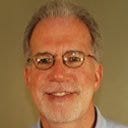Cracking the Code: A Science Media — Research Collaboration
Setting the stage
This article is one of a multipart series exploring the unique media practitioner-academic research collaboration of Cracking the Code: Influencing Millennial Science Engagement (CTC) a three year Advancing Informal STEM Learning Innovations (AISL) research project funded by the National Science Foundation (NSF) between KQED, a public media company serving the San Francisco Bay Area, Texas Tech and Yale universities. KQED has the largest science reporting unit in the West focusing on science news and features including their YouTube series Deep Look.
A project kick-off
A key assumption underlying the formation of cross-disciplinary research collaborations such as the NSF supported Cracking the Code (CTC) project, is that the inclusion of individuals with diverse knowledge, perspectives, and research methods will lead to translational breakthroughs that might not be achieved by a more homogenous group of individuals. Of course, this is easier said than done. This diversity, while potentially serving as a catalyst for innovation and generative thinking, can also negatively impact work processes, and weaken members’ identification with the group, especially if individual agendas take priority. The more each team knows and learns about the other, the easier it is to establish a positive framework for building a mutually beneficial collaboration.
One key dilemma facing CTC staff at the outset of the project was how to best integrate the skills and knowledge of members from different disciplines and research practices, especially for a project with multiple research objectives and a multi-year timeframe. To initiate this ‘melding’ process of research and practice, in November 2019 (a few months after the formal award announcement), KQED hosted a two-day CTC kickoff meeting in San Francisco, CA. Attendees included project participants from KQED and the research team (Texas Tech/Yale), Advisory Group members and other experts in the fields of science media, science communication, audience engagement, and marketing. In addition to opportunities for the project team to physically meet each other (many for the first time), KQED organized an ambitious agenda that included discussion and reflection on how to design and adopt new audience and editorial practices that included research, research tools, metrics, engagement and content variables along with the editorial hunches and expertise of media professionals.
Presentations were given by KQED science media and news staff, and members of the research team. Day One activities included presentations from the Fred Jacobs survey group on findings from a national survey commissioned by KQED on levels and types of science curiosity and science media preferences of millennials, Drs. Dan Kahan and Asheley Landrum on their Science Curiosity Scale research and methods for developing audience profiles and how to use research tools, and KQED staff presentations on audience engagement, workflow and impact measurement.
Day 2 included discussions on editorial hunches (and how media professionals use them), and an overview of KQED science activities. Small group activities included design sprints on methods for increasing engagement, how to turn research questions into hypothesis, and creating protocols to test hypothesis. The groups came together to discuss their findings, which led to a larger discussion and reflection on overall learnings and recommendations for best ways to initiate the ‘merging’ process of research and practice.
Complements and concerns
Attendees remarked that the workshop was valuable not only for the breadth of information presented, but also for the diversity of attendees who participated. Many attendees, especially those coming from media and content production organizations, commented on the benefit gained from hearing perspectives from the academic research community.
I’ve wrestled with these problems of how to engage new audiences, and even how to hold onto ‘traditional’ audiences who are changing viewing habits. It’s fascinating to think how applying a validated research lens, as opposed to a more straightforward marketing approach, might provide some fresh ideas. I’d like to find out how we can test the science curiosity of our audiences.
The kickoff also provided a venue for KQED staff to meet colleagues from other departments. KQED Science staff appreciated the opportunity to meet and brainstorm with colleagues reporters from KQED’s News Department. A number of staff commented that reporters are rarely able to spend that type of concentrated time with experts in the field of areas they are reporting on.
There were, however, critiques of the workshop that would presage issues that would occur over the course of the project. Some researchers were concerned that survey results by the Jacobs group were presented as too definitive. Practitioners remarked that the academic research presentations were ‘over their heads suggesting that the presenters used terminology that was unfamiliar to non-academics. Others remarked that the idea of developing and then honing down research questions was unwieldy and unrealistic given the scope of material presented and lack of time to properly consider each question.
The CTC kickoff meeting provided a glimpse not only to the the opportunities but also the challenges that awaited the collaborative teams as they would begin work in earnest early the following year.
